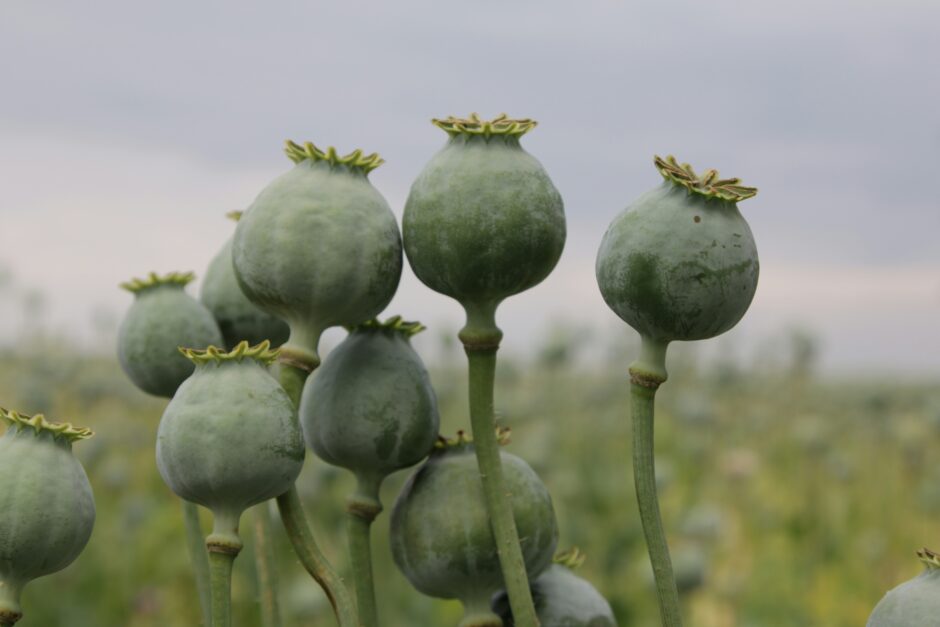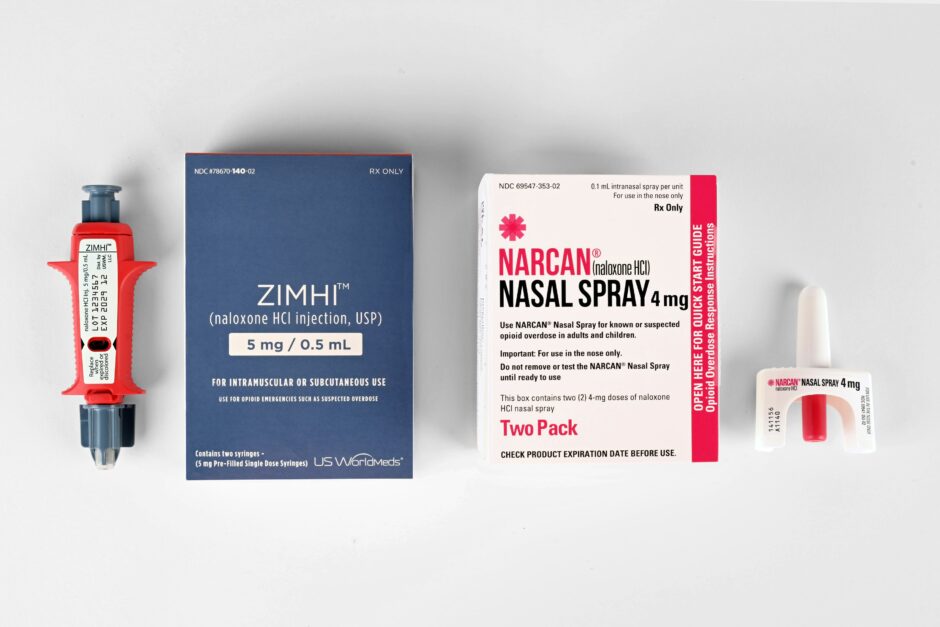First used as medication in the 1800s and having its natural origin in the poppy plant, opium functioned as an effective painkiller and treatment for severe diseases such as cancer. These days, the United States is facing the deadliest drug crisis in the country’s history. What started as a large-scale public health issue has long advanced to a continent-wide epidemic in North America. Former U.S. president Donald Trump declared it a Public Health Emergency on October 26, 2017.
According to the U.S. National Center for Health Statistics, drug overdose deaths nationwide exceeded 100,000 in 2022, almost 80,000 of whom are attributable to opioids. These numbers are equivalent to two Vietnam wars every year and a 9/11 every two weeks. Every 15 minutes, a baby is born in the U.S. addicted to opioids. For decades, drug crises, like crack cocaine in the 1980s and methamphetamine in the 1990s and early 2000s, were blamed on ethnic minorities and the poor. The current opioid epidemic, however, has also hit wealthy suburban neighborhoods and penetrated all social strata.
How did millions of Americans get dependent on opioids?
The root of the vast majority of substance abuse issues lies within the profit-driven U.S. medical system and the overprescription of opium based medicine decades ago. Being effective pain killers, opioids have always been widely used in the medical field, but tightly controlled due to their severe addictiveness. In the 1990s, the narrative shifted. Healthcare providers prescribed opioid pain relievers under the false impression they were much less addictive than previously thought. Manufacturers, such as Purdue Pharma, the then market leader and company behind OxyContin, employed aggressive marketing techniques to convince doctors of prescribing far stronger opioid medications than before. As billions of dollars were to be made, sales representatives were sent all across North America. The marketing strategies worked: from 1997 to 2002, OxyContin prescriptions increased from 670.000 to more than 6 million. Naturally, consumers became addicted.
But the true opioid crisis did not erupt until the early 2010s, when authorities started prosecuting overprescribing doctors across the country. Millions of Americans, who were dependent on opioid medications, were suddenly cut off by their providers and thus had to turn to the black market for the purchase of heroin. As a result, some of the users began dying of overdoses and heroin death numbers started rising. OxyContin patients, many of whom were prescribed the powerful pain killer as part of cancer treatment or after accidents and surgeries, were driven to illicit street drugs as substitutes to counteract the withdrawal symptoms. The U.S. government’s War on Drugs had dreadful consequences, but the true horror of the opioid epidemic had not even begun. Thinking it could not get worse than heroin, fentanyl entered the drug market.

Photo by Jens Vogel on Unsplash.
Originally developed by the Belgian scientist Paul Janssen in the 1960s as an alternative to morphine, this rapidly spreading substance is easily and purely synthetically produced for a cheap price. Fentanyl is not just a highly addictive opioid, but concurrently 50 times more potent than heroin and 100 times more potent than morphine. Two milligrams, which is the amount of a few grains of salt, can be fatal. Considering one pound of fentanyl is equivalent to 50 pounds of heroin, drug traffickers have found a much more lucrative business in this substance. A million doses of fentanyl can be smuggled in just a shoebox.
Where does the fentanyl come from?
The vast majority of fentanyl related products in the U.S. is proven to be imported from China, an issue which strains the already tense bilateral relations between the two countries. The Chinese chemistry industry produces precursor chemicals, which are being sent to Mexican drug cartels to be processed into fentanyl there. This way, the Cartels were turned into a logistical network. Fentanyl either enters the United States as contraband across the American-Mexican border or is shipped straight from China through the postal service. Traffickers play the numbers game, knowing U.S. authorities can only check a limited amount of imports.
The United States accuses China of weaponizing fentanyl, while China claims the opioid epidemic is an entirely domestic American issue, which the Asian superpower is being charged for. The matter is multilayered and has put severe pressure on foreign policy. After Nancy Pelosi, the then incumbent Speaker of the House of Representatives, visited Taiwan in 2022 against Chinese will, China stopped all anti-fentanyl-trafficking cooperations with U.S law enforcement. Trilateral talks with Mexico were also canceled after the trip.
Some argue China is taking revenge for the opium wars in the 19th century, where the United States, the United Kingdom and France weaponized opium to restore the balance of trade back in their favor. Opioids produced in the British colony India were used to pay for Chinese silk and other popular goods. Millions of Chinese became dependent on opium, paralyzing the economy and making it impossible to set up a powerful army, since 25% of males were addicted to the substance. As opioids became an existential threat to China, laws banning narcotics were passed and foreign opioids were confiscated and destroyed. In response to this, the British Empire launched the first opium war, which ended disastrous for Chinese forces. More decades-long wars followed and China had to make major concessions to foreign countries in several treaties, such as the Treaty of Nanjing in 1842, where Britain gained control over Hong Kong. Qin Gang, China’s former ambassador to the U.S., stated the opium wars started a century of humiliation for his country.
Crisis intervention efforts
Since fentanyl was approved as a pharmaceutical in the U.S. by the Food and Drug Administration in 1988 and is therefore treated as a schedule 2 narcotic, it is not subject to the same scrutiny as substances like LSD or heroin, despite its far higher potential lethality. After authorities started fighting overprescription and users had to turn to illicit drugs, the demand in the U.S. for these substances skyrocketed and so did the supply from China. Acts were passed between the Trump administration and the Chinese government to stop the flow of illicit fentanyl through the mail after the opioid crisis had cost the United States a 1,5 trillion dollar drop in the economy in 2020, 7% of the country’s annual GDP.

Photo by Pharmacy Images on Unsplash.
Fentanyl-related deaths kept accelerating in spite of these efforts. China allegedly failed to enact the laws and Chinese chemists found loopholes by producing fentanyl analogs. Analogs have a similar, yet not the same chemical structure as the original drug, but mimic the same pharmaceutical effects. Thereby, chemists still operate legally in China. However, China is not the only country involved in the extensive production of fentanyl. According to the Drug Enforcement Administration, India serves as an emerging supplier of analogs and precursors as well.
The epidemic in the future
All potential solutions for the crisis have major downsides. The United States could either permanently place fentanyl in schedule 1 of the Controlled Substance Act, and thus deem the substance illicit, in order to legitimize law enforcement interventions against traffickers or launch military strikes against Mexican drug cartels by classifying them as foreign terrorist organizations. What might be a more enduring resolution is an extensive and fundamental reform of the American healthcare system.
Substance overdoses have now advanced to be the dominant cause of accidental death in the country and fentanyl was the leading cause of death for 18- to 45-year-olds in 2022. Experts project opioids will kill more than half a million people in the United States within the next decade.




